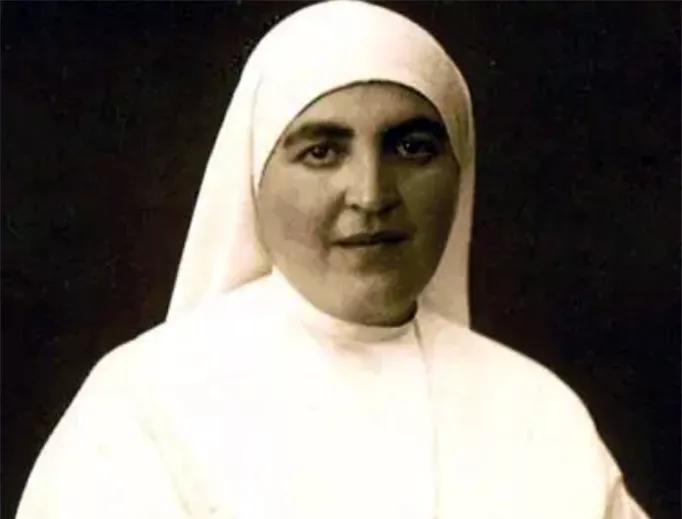Antonietta Giugliano was born in New York City on July 11, 1909 into a family who had immigrated from Italy. When she was 5 years old, her mother died, and Antonietta’s father took her and her two sisters to his home in Afragola, a part of Naples.
In Italy, Antonietta grew up with her father, stepmother, and seven siblings. Because her father wanted Antonietta to have a good religious education, he left her in the care of the Sisters of Charity of Regina Coeli Naples during her childhood and adolescence.
By the time she was sixteen, Antonietta realized she had an attraction to serve God in the religious life. Though her father wanted her to get married into a social class that he thought she deserved, Antonietta rejected all his attempts to push her into dating.
To develop her spiritual life, Antonietta began reading Thomas a Kempis’ Imitation of Christ, the Bible, and St. Therese of Lisieux’ Story of a Soul. She also designed a daily schedule for putting her spiritual life into action called “Regulation of the Christian Life.” This plan included 32 points to follow including time to wake up, time to meditate, time to go to Mass, and the like.
Her family, however, was not at all pleased at Antonietta’s increasing focus on the spiritual life. On the contrary, they had dreams of her marrying “well” and increasing the family’s fortune.
Fortunately for Antonietta, however, she had a relative who became her best friend, Raffaelina Tuccillo, and the two shared each other’s dreams. Antonietta confided in her friend that she would one day like to become a cloistered nun.
One day, Antonietta and Raffaelina took a trip to visit a cousin who was a missionary sister. This visit gave Antonietta a new possibility to consider, that is, to serve God in active ministry. So, at age 20, Antonietta visited her parish priest to get some vocational advice. After listening to her, he sent her to visit Fr. Vicenzo Del Prete, a Franciscan known in religious life as Father Sosio.
After talking a bit, Fr. Sosio told her that there was plenty of work to be done right there in Afragola. And further, he suggested that perhaps God was calling her to start a new religious order of sisters to care for the poor, elderly, and ill. So, that is exactly what Antonietta set out to do.
After battling her family members that were angry at her decision not to get married, she purchased a building next to a Franciscan convent to begin a new religious community. She called it the Institute of the Little Sisters of Christ the King. The community’s founding date was the feast of St. Anthony of Padua, June 13. 1935. Fr. Sosio is considered a co-founder of the order.
Antonietta, some other future sisters, and a group of Third Order Franciscans turned the old building they had into a home for the elderly and child day care center. In October of that year, Antonietta took vows and the religious name of Antonietta of Jesus.
The Sisters sometimes had less than a tranquil working environment. Once, for example, they had to battle Mussolini fascists who tried to take over the center as their headquarters, and during World War II, the convent was turned in an emergency hospital in 1943. The Sisters took care of the wounded during the bombing of the area; fortunately, the convent was not hit.
When the war was over, the Sisters turned their attention to caring for children who were orphaned as a result of the war, and their order expanded to other parts of Italy.
On June 8, 1960. Mother Antonietta died at the age of 51 following years of chronic pain. At the time of her death, there were 200 Sisters and postulants, 450 elderly, and 1,500 orphans.
Pope Francis declared her Venerable in 2019.



